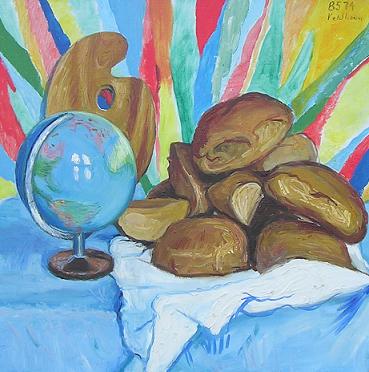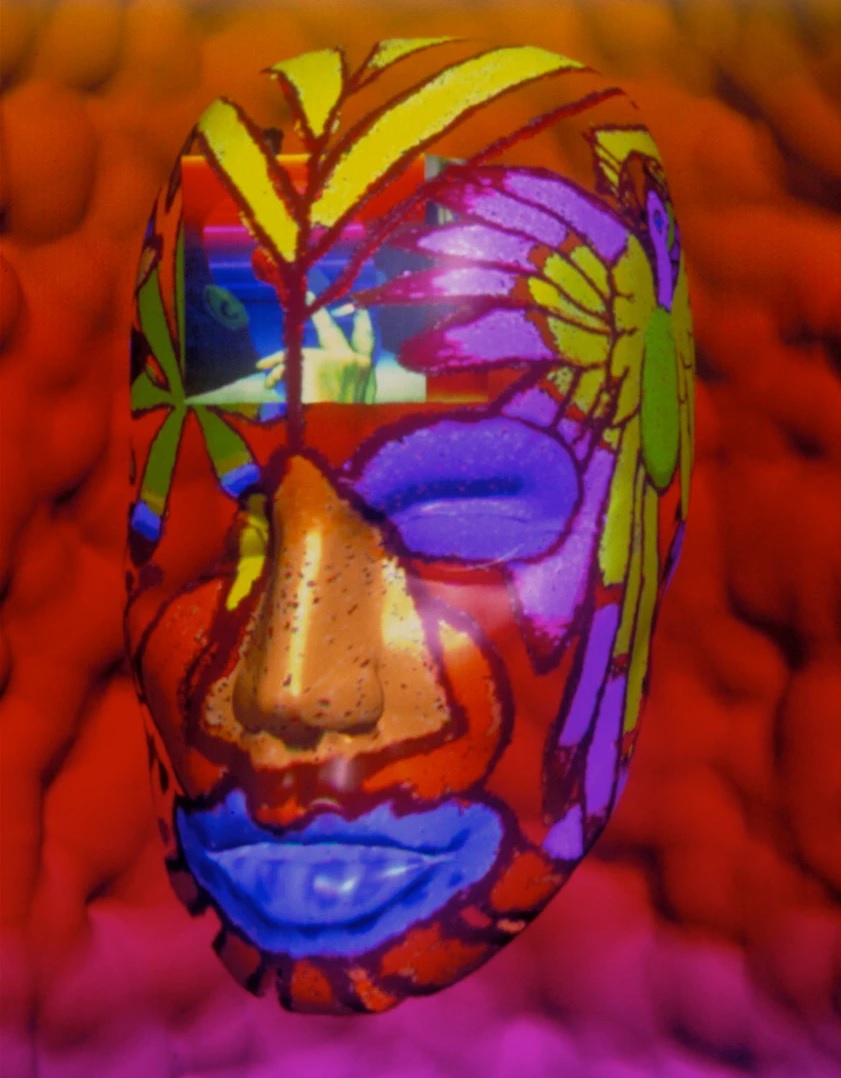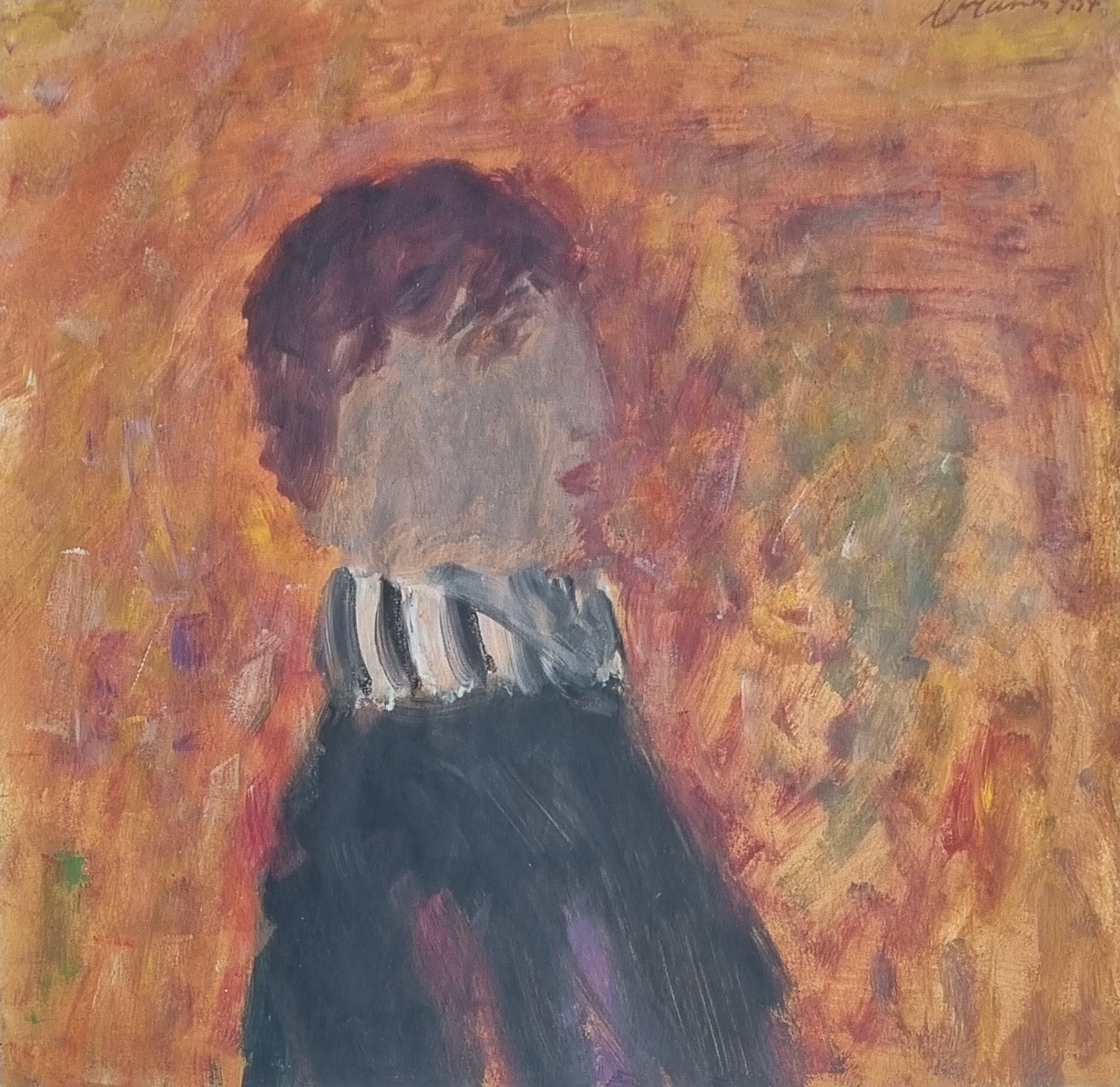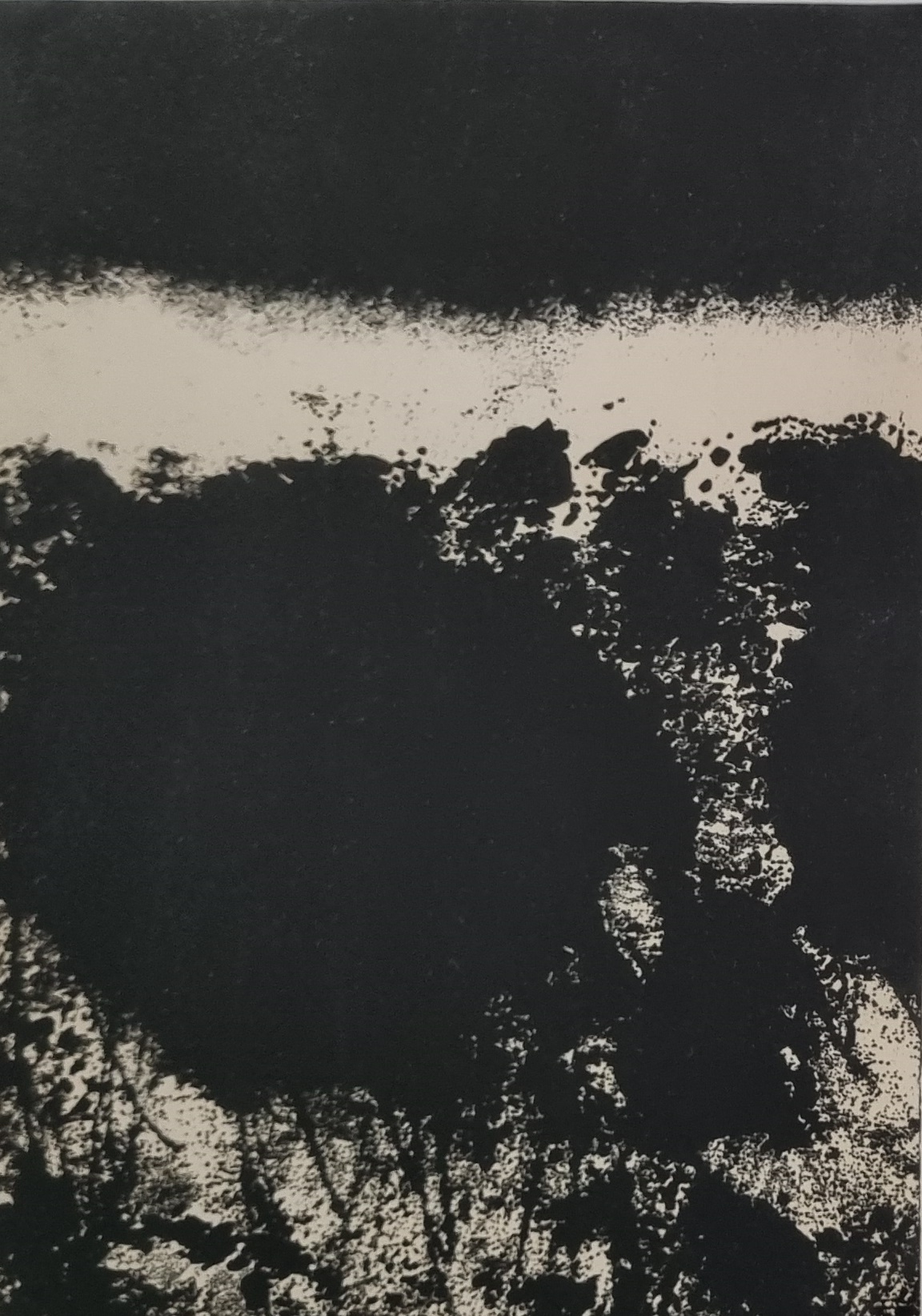.JPG)
Beschrijving
Signed, titled and dated 'raoul de keyser 1970 "KALKLIJN"' (on the reverse). Painted in 1970. Provenance: Acquired directly from the artist by the present owner in 1971.
Pre-Lot Text
‘I had always taken a keen interest in new movements, for artists who put art on a new track. I was particularly fascinated by the younger artists from these new movements. It was their work I bought.’ - Roger Matthys
‘They showed us what collecting art meant, how you had to approach art … For us, the work of this generation was invaluable’. - Anton Herbert
Pioneering in spirit, outstanding in provenance and exceptional in quality, the Matthys-Colle Collection stands among Europe’s most important and influential private collections. Assembled during the second half of the twentieth century, it bears witness to the visionary passion for international contemporary art that Dr Roger Matthys and his wife Hilda Colle brought to their native Belgium during this period. In 1957, Matthys co-founded the Friends of the Museum of Contemporary Art in Ghent, whose acquisitions would later form the basis of the Stedelijk Museum voor Actuele Kunst (S.M.A.K.). The organisation transformed the Belgian cultural scene, championing living artists at a time when their work was largely disregarded by local institutions and the public. As the couple’s own collection grew during the 1970s and 1980s, they made regular trips to galleries in Europe and America, broadening their interests from Belgian art to Minimalism, Conceptualism, Pop and many other trends in painting and sculpture. They nurtured strong relationships with the young artists whose work they acquired, frequently inviting them to stay at their home – a brutalist masterpiece in reinforced concrete, designed by renowned architect Ivan Van Mossevelde in 1972. The breadth and depth of their engagement with the art of their time was remarkable, providing vital inspiration for a new generation of collectors. Uniting diverse styles and media, it represents a time capsule of the thriving creative currents that collectively transformed the Western art world during this period.
Christie’s is delighted to offer a selection of works from this extraordinary collection in a number of Post-War and Contemporary Art auctions across Europe. Together, they demonstrate the spirit of curiosity and connoisseurship that defined the couple’s approach to art. Most were acquired directly through artists or their galleries, often just months after their creation. Many have spent their entire lives in the collection, and are unveiled here for the first time. Others have been loaned to important museum retrospectives, including a major exhibition dedicated to the collection at the Museum Dhondt-Dhaenens, Belgium, in 2007. All were cherished by the couple, who lived among them in their home. ‘I think collecting quickly becomes an attitude’, reflected Matthys; ‘… you simply want to possess the things that so pleasantly surprise you … You want to get hold of the work but you also want to cherish it.’
A neuropsychiatrist by trade, Matthys grew up surrounded by art. His father was a picture framer, and local artists would visit regularly to discuss their work. ‘A lot of them were always short of money and paid my father with art works’, he recalled. ‘More and more paintings covered the walls of our house!’ As a student, he met Hilda, whose parents also collected art. ‘We dated in the Arts and Letters Society in Ghent’, explained Matthys. ‘We met amidst [Constant] Permeke’s works! So, I presume you could call it fate.’ In the second half of the 1950s, Matthys met the lawyer Karel Geirlandt, with whom he struck up a close friendship. Together they played a central role in the Friends of the Museum of Contemporary Art, selling prints by Belgian artists and using the money to expand the museum’s holdings. ‘We wanted to reach out to the public at large and awaken policy makers to the existence of contemporary art and its importance’, said Matthys. Travelling to Paris on Saturdays, they would visit tens of galleries in a single day, encountering works by artists such as Robert Rauschenberg, Jasper Johns and Tom Wesselmann. Back at home, they would organise exhibitions in Sint-Pietersabdij (St Peter’s Abbey) in Ghent, showcasing their latest findings. Their influence was wide-reaching: ‘they showed us what collecting art meant, how you had to approach art’, recalled the collector Anton Herbert. ‘… In those days the only place where you could see contemporary art in Belgium was in the Palais des Beaux-Arts in Brussels. That was it. For us, the work of this generation was invaluable.’
Alongside their links with the museum, the Matthys-Colles began to build their own collection. In 1959, the couple made their first purchase: a painting by the Belgian artist Jan Burssens. Through their early encounters with the work of the ‘jeunes peintres belges’, they acquired a taste for abstract art, leading them to buy paintings by Karel Appel. Soon after came drawings by Cy Twombly, which they carefully selected from huge piles in the Parisian gallery owned by Pierre Restany’s girlfriend Jeanine de Goldsmidt. Over the years, they became regular visitors to dealers such as Ileana Sonnabend and Yvon Lambert, as well as Art & Project in Amsterdam. Elsewhere, they explored Nouveau Réalisme, Arte Povera, Surrealism and monumental sculpture. Their fascination with American Minimalism led them to buy works by Carl Andre, Dan Flavin, Donald Judd, Robert Mangold, Robert Ryman and Sol LeWitt, who created an in situ wall drawing in the couple’s home. At Leo Castelli’s gallery in New York, they absorbed the aesthetics of Pop Art, eventually selling a painting by Jean Brusselmans in order to acquire Andy Warhol’s Big Electric Chair (1967). Despite the thrill of these new discoveries, however, they never lost sight of their roots: works by Belgian artists, including Panamarenko, Thierry De Cordier and Raoul De Keyser, continued to play a vital role in the collection.
Uniting many of the couple’s acquisitions was a strong interest in Conceptualism, as demonstrated by the works offered for sale at Christie’s Amsterdam. Founded upon the primacy of ideas – rather than aesthetics – the movement took flight during the 1960s and 1970s, building upon the legacy of Marcel Duchamp and Fluxus. The Netherlands became an important centre of activity: Dutch artist Jan Dibbets worked primarily with photography, using mathematical principles to capture natural and manmade phenomena. stanley brouwn created his most important work this way brouwn by asking strangers to tape record or draw a set of directions. The British collective Art & Language sought to critique contemporary art institutions through their series Incidents in a Museum, whilst Victor Burgin – nominated for the 1986 Turner Prize – explored the role of text, immersing himself in critical theory and philosophy. Across the Atlantic, American artist Robert Barry set out to explore invisible and non-material media, championing the idea that ‘Nothing seems to me the most potent thing in the world’. The present selection also includes works by German artists Ulrich Rückriem and Bernd Lohaus: a former student of Joseph Beuys, and co-founder of the Antwerp gallery Wide White Space, which became a favourite of the Matthys-Colles.
‘What strikes me about Dr Matthys’s collection, is that there is something deliberate about it’, said Joost Declerq, former director of the Museum Dhondt-Dhaenens. ‘These are not what we usually call emotionally charged, expressionist works – quite on the contrary. This is a very serene collection.’ Indeed, for all its diversity, the collection bears witness to the couple’s sharp curatorial vision: a taste for crisp, complex visual objects that pose vital questions about the nature of art itself. At the same time, however, it remains a rich, poignant record of the friendships and international dialogues that ultimately defined their legacy. ‘The work of art enables one to discover an entirely new world’, explained Matthys; ‘– the world of the work itself, but also of all those involved: artists, collectors, critics, gallery owners.’ This spirit of exploration, enquiry and exchange is ultimately encapsulated by the couple’s visitors’ book: an extraordinary document replete with sketches and handwritten notes from every artist who came to stay with them. It serves as a powerful reminder that, through passionate engagement with the art of our time, we might move beyond our own spheres of existence, and make lasting connections with the world around us.
Details
- Databanknummer:
- 83279
- Lotnummer:
- -
- Advertentietype
- Archief
- Instelling:
- Christie's Amsterdam B.V.
- Veilingdatum:
- -
- Veilingnummer:
- -
- Stad
- -
- Limietprijs
- -
- Aankoopprijs
- -
- Verkoopprijs
- -
- Hamerprijs
- -
- Status
- Verkocht
Technische details
- Kunstvorm:
- Schilder- en Tekenkunst
- Technieken:
- Olieverf
- Dragers:
- Doek
- Lengte:
- 190 cm
- Breedte:
- 190 cm
- Hoogte:
- -
- Oplage:
- -
Beschrijving
Signed, titled and dated 'raoul de keyser 1970 "KALKLIJN"' (on the reverse). Painted in 1970. Provenance: Acquired directly from the artist by the present owner in 1971.
Pre-Lot Text
‘I had always taken a keen interest in new movements, for artists who put art on a new track. I was particularly fascinated by the younger artists from these new movements. It was their work I bought.’ - Roger Matthys
‘They showed us what collecting art meant, how you had to approach art … For us, the work of this generation was invaluable’. - Anton Herbert
Pioneering in spirit, outstanding in provenance and exceptional in quality, the Matthys-Colle Collection stands among Europe’s most important and influential private collections. Assembled during the second half of the twentieth century, it bears witness to the visionary passion for international contemporary art that Dr Roger Matthys and his wife Hilda Colle brought to their native Belgium during this period. In 1957, Matthys co-founded the Friends of the Museum of Contemporary Art in Ghent, whose acquisitions would later form the basis of the Stedelijk Museum voor Actuele Kunst (S.M.A.K.). The organisation transformed the Belgian cultural scene, championing living artists at a time when their work was largely disregarded by local institutions and the public. As the couple’s own collection grew during the 1970s and 1980s, they made regular trips to galleries in Europe and America, broadening their interests from Belgian art to Minimalism, Conceptualism, Pop and many other trends in painting and sculpture. They nurtured strong relationships with the young artists whose work they acquired, frequently inviting them to stay at their home – a brutalist masterpiece in reinforced concrete, designed by renowned architect Ivan Van Mossevelde in 1972. The breadth and depth of their engagement with the art of their time was remarkable, providing vital inspiration for a new generation of collectors. Uniting diverse styles and media, it represents a time capsule of the thriving creative currents that collectively transformed the Western art world during this period.
Christie’s is delighted to offer a selection of works from this extraordinary collection in a number of Post-War and Contemporary Art auctions across Europe. Together, they demonstrate the spirit of curiosity and connoisseurship that defined the couple’s approach to art. Most were acquired directly through artists or their galleries, often just months after their creation. Many have spent their entire lives in the collection, and are unveiled here for the first time. Others have been loaned to important museum retrospectives, including a major exhibition dedicated to the collection at the Museum Dhondt-Dhaenens, Belgium, in 2007. All were cherished by the couple, who lived among them in their home. ‘I think collecting quickly becomes an attitude’, reflected Matthys; ‘… you simply want to possess the things that so pleasantly surprise you … You want to get hold of the work but you also want to cherish it.’
A neuropsychiatrist by trade, Matthys grew up surrounded by art. His father was a picture framer, and local artists would visit regularly to discuss their work. ‘A lot of them were always short of money and paid my father with art works’, he recalled. ‘More and more paintings covered the walls of our house!’ As a student, he met Hilda, whose parents also collected art. ‘We dated in the Arts and Letters Society in Ghent’, explained Matthys. ‘We met amidst [Constant] Permeke’s works! So, I presume you could call it fate.’ In the second half of the 1950s, Matthys met the lawyer Karel Geirlandt, with whom he struck up a close friendship. Together they played a central role in the Friends of the Museum of Contemporary Art, selling prints by Belgian artists and using the money to expand the museum’s holdings. ‘We wanted to reach out to the public at large and awaken policy makers to the existence of contemporary art and its importance’, said Matthys. Travelling to Paris on Saturdays, they would visit tens of galleries in a single day, encountering works by artists such as Robert Rauschenberg, Jasper Johns and Tom Wesselmann. Back at home, they would organise exhibitions in Sint-Pietersabdij (St Peter’s Abbey) in Ghent, showcasing their latest findings. Their influence was wide-reaching: ‘they showed us what collecting art meant, how you had to approach art’, recalled the collector Anton Herbert. ‘… In those days the only place where you could see contemporary art in Belgium was in the Palais des Beaux-Arts in Brussels. That was it. For us, the work of this generation was invaluable.’
Alongside their links with the museum, the Matthys-Colles began to build their own collection. In 1959, the couple made their first purchase: a painting by the Belgian artist Jan Burssens. Through their early encounters with the work of the ‘jeunes peintres belges’, they acquired a taste for abstract art, leading them to buy paintings by Karel Appel. Soon after came drawings by Cy Twombly, which they carefully selected from huge piles in the Parisian gallery owned by Pierre Restany’s girlfriend Jeanine de Goldsmidt. Over the years, they became regular visitors to dealers such as Ileana Sonnabend and Yvon Lambert, as well as Art & Project in Amsterdam. Elsewhere, they explored Nouveau Réalisme, Arte Povera, Surrealism and monumental sculpture. Their fascination with American Minimalism led them to buy works by Carl Andre, Dan Flavin, Donald Judd, Robert Mangold, Robert Ryman and Sol LeWitt, who created an in situ wall drawing in the couple’s home. At Leo Castelli’s gallery in New York, they absorbed the aesthetics of Pop Art, eventually selling a painting by Jean Brusselmans in order to acquire Andy Warhol’s Big Electric Chair (1967). Despite the thrill of these new discoveries, however, they never lost sight of their roots: works by Belgian artists, including Panamarenko, Thierry De Cordier and Raoul De Keyser, continued to play a vital role in the collection.
Uniting many of the couple’s acquisitions was a strong interest in Conceptualism, as demonstrated by the works offered for sale at Christie’s Amsterdam. Founded upon the primacy of ideas – rather than aesthetics – the movement took flight during the 1960s and 1970s, building upon the legacy of Marcel Duchamp and Fluxus. The Netherlands became an important centre of activity: Dutch artist Jan Dibbets worked primarily with photography, using mathematical principles to capture natural and manmade phenomena. stanley brouwn created his most important work this way brouwn by asking strangers to tape record or draw a set of directions. The British collective Art & Language sought to critique contemporary art institutions through their series Incidents in a Museum, whilst Victor Burgin – nominated for the 1986 Turner Prize – explored the role of text, immersing himself in critical theory and philosophy. Across the Atlantic, American artist Robert Barry set out to explore invisible and non-material media, championing the idea that ‘Nothing seems to me the most potent thing in the world’. The present selection also includes works by German artists Ulrich Rückriem and Bernd Lohaus: a former student of Joseph Beuys, and co-founder of the Antwerp gallery Wide White Space, which became a favourite of the Matthys-Colles.
‘What strikes me about Dr Matthys’s collection, is that there is something deliberate about it’, said Joost Declerq, former director of the Museum Dhondt-Dhaenens. ‘These are not what we usually call emotionally charged, expressionist works – quite on the contrary. This is a very serene collection.’ Indeed, for all its diversity, the collection bears witness to the couple’s sharp curatorial vision: a taste for crisp, complex visual objects that pose vital questions about the nature of art itself. At the same time, however, it remains a rich, poignant record of the friendships and international dialogues that ultimately defined their legacy. ‘The work of art enables one to discover an entirely new world’, explained Matthys; ‘– the world of the work itself, but also of all those involved: artists, collectors, critics, gallery owners.’ This spirit of exploration, enquiry and exchange is ultimately encapsulated by the couple’s visitors’ book: an extraordinary document replete with sketches and handwritten notes from every artist who came to stay with them. It serves as a powerful reminder that, through passionate engagement with the art of our time, we might move beyond our own spheres of existence, and make lasting connections with the world around us.
Geen prijsinformatie? Sluit een abonnement af.
Aangeboden kunst
Een selectie uit ons kunstaanbod
.JPG)
.JPG)



